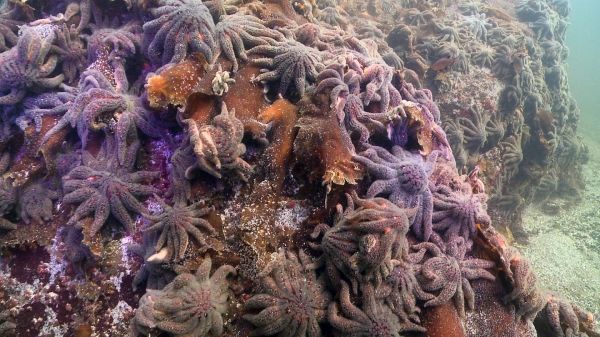The combination of ocean warming and an infectious wasting disease has devastated populations of large sunflower sea stars once abundant along the West Coast of North America in just a few years, according to a study co-led by the University of California, Davis, and Cornell University published Jan. 30 in the journal Science Advances.
“At one time plentiful in nearshore waters, the sunflower sea stars right now cannot be found off the California coast and are rare into Alaska,” said Drew Harvell, Cornell professor of ecology and evolutionary biology, a co-lead author. “Numbers of the sea stars have stayed so low in the past three years, we consider them endangered in the southern part of their range, and we don’t have data for northern Alaska.”
Since 2013, sea star wasting disease has brought about massive mortality in multiple sea star species from Mexico to Alaska. The East Coast has not been immune, as the disease has affected the shores from New Jersey to New England.
A disease with many hosts
Diego Montecino-Latorre, a wildlife epidemiologist with the UC Davis One Health Institute and a co-lead author, said the sunflower sea star continues to decline even in the deepest ocean, and it is not recovering in the same way experienced by the intertidal ochre star.
Read more at University of California - Davis
Image: Thousands of sunflower sea stars swarm Croker Rock near Croker Island in the Indian Arm fjord, north of Vancouver, British Columbia, on Oct. 9, 2013. Three weeks later, the sea stars vanished. (Credit: Neil McDaniel)


